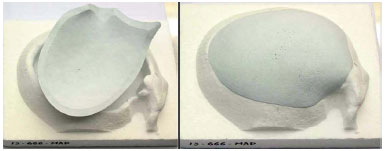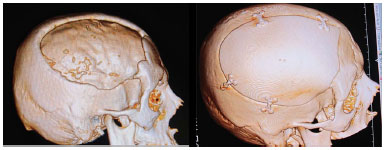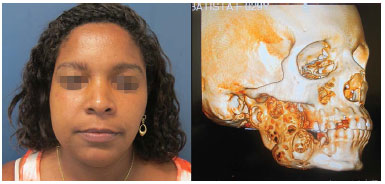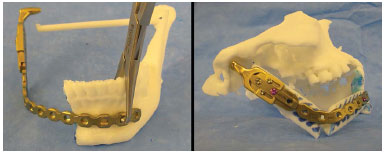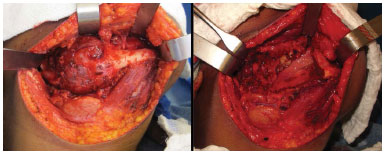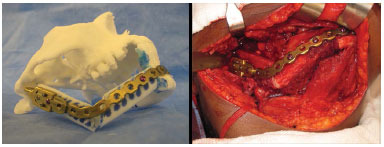ABSTRACT
Prototyping is a process of construction in order to obtain physical prototypes from 3D digital models. The introduction of prototyping in medicine is a recent event. Case 1: An 18-year-old patient with a 192 cm2 cranial defect secondary to a decompressive craniectomy. A cranioplasty was performed using a customized prosthesis manufactured by prototyping. Case 2: A 34-year-old patient with a panfacial fracture sequelae. This patient had a relevant defect in the zygomatico-orbital complex, with great zygoma dislocation. Surgical planning was performed using the prototype, which was taken to the surgery room to support the surgery. Case 3: A 29-year-old patient with a mandibular ameloblastoma from the subcondylar region to the right parasymphysis. Prototyping of the craniofacial skeleton and fibula were carried out in addition to a model surgery that was performed on the previous day. Discussion: Prototyping can be applied to craniofacial surgery in many ways, such as customized prosthesis manufacturing, surgical planning, and education of residents and patients. In case 1, a customized prosthesis had the advantage of not requiring a donor area and resulted in excellent esthetic results. In case 2, the presence of the prototype during surgery helped identify the zygoma more quickly in order to reposition it. In case 3, the model surgery helped decrease morbidity of the donor area, define fibular osteotomy and the resection margins, mold the plate, select the screws, ensure the condylar prosthesis fit in the temporomandibular joint (TMJ ), achieve the best occlusion possible, and reduce the surgical time, anesthesia, and hospital-associated costs.
Keywords: Three-dimensional printing; Craniotomy; Injuries and lesions/complications; Mandible/abnormalities.



